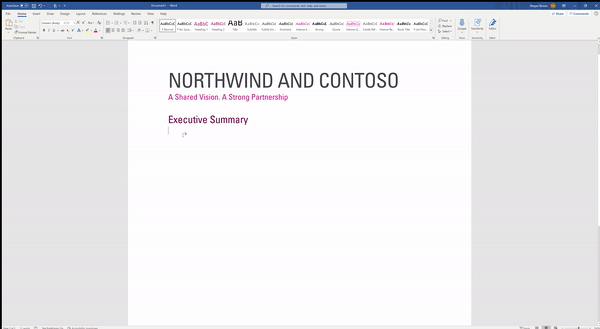Microsoft Word Is About To Get An Exciting Upgrade You Probably Need
- Microsoft announced text prediction for the beta versions of Word and Outlook last fall.
- After being released for Outlook this month, the feature will roll out to all Word users in March.
- Text prediction uses machine learning to guess what users might write next, offering better suggestions over time as it learns the user's typing patterns.
Google's Smart Compose feature is a neat new trick that lets you type faster in Gmail and Docs. If enabled, Smart Compose uses machine learning to predict what you'll type next and offer suggestions as you type. The feature can be handy if you're looking to power through emails or if you're a slow typer.
Of course, text prediction can also come in handy while balancing work from home during the pandemic with everything else that might be going on around you. Microsoft has been working on a similar feature for Microsoft Word for a while now, and its own text prediction tool will roll out to users in March.
Microsoft made its text prediction tool available to Word and Outlook beta users in mid-September. "Text predictions help users write more efficiently by predicting text quickly and accurately," Microsoft explained at the time. "The feature reduces spelling and grammar errors and learns over time to give the best recommendations based on your writing style."
The way it works is similar to Google's Smart Compose. As soon as you start typing, text prediction will appear grayed out. To accept the word suggestion, you have to press the Tab key. If the suggestion isn't appropriate, press the Escape key to reject it.

An animation shows Microsoft Word's text prediction feature in action.
Microsoft's text predictor will learn from your typing habits and adapt to your writing. Future suggestions might be significantly improved as a result. The data that the algorithm uses is processed locally and never leaves the device, Microsoft explained at the time. As a result, the content is not stored on Microsoft's servers or seen by a human unless users specifically choose to provide feedback.
If you're already a proficient Word user who doesn't need suggestions along the way, you can turn off Word's text prediction. The feature might slow down those users who type real fast or those who do not want any kind of distractions while working — stopping to decide whether you wish to use the word suggestion or not mess with one's flow.
Back in September, Microsoft said that just 50% of beta users would get the feature without providing any insight as to whet text predictions will be available in the public version of Word. Neowin just spotted an entry to the Microsoft 365 roadmap that indicates text predictions are coming to all users in March.
Microsoft started rolling out text prediction to Outlook users earlier this month, so you can already test it out.
